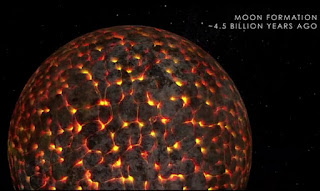Topics: Moon, Planetary Science, NASA
The ancient lunar surface once erupted with geysers of lava — and now, scientists think they know what caused those fiery fountains.
Current research suggests that the moon formed when a Mars-size object barreled into Earth in the early solar system, and for a long time, its surface was much different from the staid, unmoving landscape present today. Rather, the moon's surface was hot and active, and magma often bubbled up from below and broke the surface in fiery fountains — like a molten-hot version of Old Faithful. Until recently, researchers were unsure of the driving force behind those explosions, which could reveal more about conditions on the early moon.
But now, scientists may have found a possible culprit for the molten explosions: carbon monoxide. [Watch: How the Moon Was Made]
"The carbon is the one that is producing the large spectacle," said Alberto Saal, a geologist at Brown University in Providence and co-author of the new study. "With a little bit of water, with a little bit of sulfur — but the main driver is carbon."
This finding suggests the early moon's makeup was very close to early Earth's, Saal told Space.com. "All these volatile elements … are in concentrations that are very similar to the lava that formed the ocean floor of the Earth," he said.
Space.com: Fire Fountains of the Ancient Moon Explained, Sarah Levin

Comments